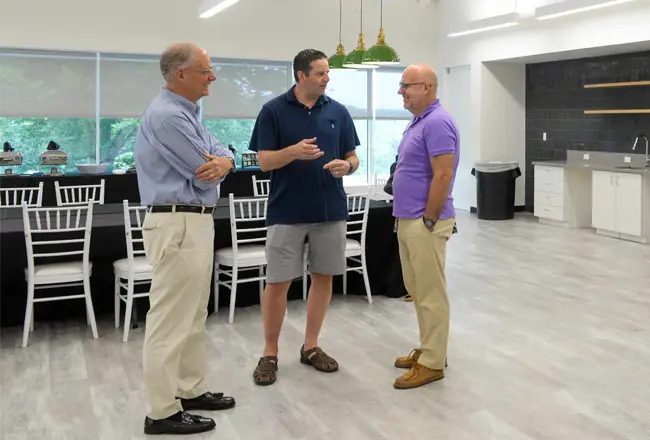
Story Copyright Westfair Communications
“Nonprofits and philanthropy are businesses,” Alyzza C. Ozer, CEO of the Boys & Girls Club of Northern Westchester (BGCNW), told the Business Journal. “I think nonprofits are equally responsible, and their leadership is equally responsible, to ensure profitability like any business.”
A business-like approach to finances and organization management throughout its history may help explain why BGCNW has been serving the area for 80 years, formerly as the Boys Club of Mount Kisco Inc.
Ozer said there are between 1,600 and 1,800 registered members from more than 40 Westchester communities with a daily attendance of more than 700 youngsters. The club”™s facilities are at 351 Main St. in Mount Kisco, an 11-acre site with a 36,000-square-foot building, two playgrounds and an eight-lane swimming pool, among other features. There are 19 full-time staff and more than 130 part timers, more than 95% of whom at one time attended the club. The club serves ages 3 through 18, with more than 70% of the youngsters in the club”™s after-school care programs living at or below the poverty level. About 700 people volunteer to help at the club, which also is a New York state licensed child-care facility.
“Our responsibility is to ensure that we”™re producing that product which is successful, happy, healthy, productive, caring kids for generations to come. The profitability component to make sure that it takes place certainly requires significant financial investment in the kids and programming and staffing and technology, reinvesting in your programming, reinvesting in your partnership, leveraging with community partners just as any business would,” Ozer said. “We must be financially successful both from a financial perspective as well as being able to demonstrate to our donors, the community, the success and the impact of our mission, which is our kids.”
Ozer said the BGCNW”™s budget is about $4 million this year. It offers more than 40 programs and is affiliated with Boys & Girls Clubs of America but operated autonomously.
“One of the benefits of being part of a national organization is the national reach and partnering capacity,” Ozer said. “I serve on two national committees: one is an advocacy committee and one is a substance-abuse prevention committee.”
She explained that the national organization serves approximately 4.3 million youngsters and there are more than 4,000 local clubs. In New York state, 140,000 youngsters take part in a club.
BGCNW has a Teen Center which presents a variety of programs focused on academic success, career preparation and community service. For teens and other age groups there are programs offering sports and recreation, arts, crafts, music, dance, educational enrichment, healthy lifestyles and more.
“We have a very, very robust aquatics program,” she said. “We have 270 athletes on our swim team, which is called the Marlins Swim Team and is very competitive.”
The team has won the Boys & Girls Club National Championships every year since 2000.
Ozer said many members of the board of directors have been involved with the organization for more than 20 years. The board president is Stuart Marwell, president and CEO of Curtiss Instruments based in Mount Kisco, who attended the club as a youngster and has been a board member for more than 28 years.
“Board members are usually volunteering at the club for several years before they actually get involved with the board, so they really understand what”™s going on operationally and programmatically with the kids,” Ozer said.
“One key differentiator from a business perspective in terms of programming is civic advocacy and leadership and teaching kids how to advocate on behalf of themselves and their communities,” Ozer said. “One of the programming opportunities that we have especially for our teens is workforce development.”
She explained that personnel from local corporations will volunteer to teach youngsters about financial responsibility, important environmental issues and the importance of diversity in the community and workplace.
“Companies have an opportunity for their own employees to come to the club,” she said. “It helps the culture within those companies in terms of employee loyalty and retention, but it also helps the kids understand that large corporations and midsize privately held organizations are investing within our community to be sure that it remains strong.”
Ozer is an attorney and worked in corporate real estate for 27 years. In 2008, she switched to philanthropy, managing the New York City office of the American Cancer Society. She applies business management techniques, including the use of metrics-based evaluation and decision-making, to BGCNW.
“Some key performance indicators that we would look at that demonstrate success for what our mission is would include the number of children that we serve and the impact and success of the programs,” Ozer said. “This past June marked the 10th anniversary whereby 100% of our high school seniors, including those designated at-risk, are going to either a university or technical school. That”™s a pretty good indication that various programming that they were fortunate to receive enabled them to be competitive and go into secondary education. That would be a business-driven statistic demonstrating success of the programming.”




















